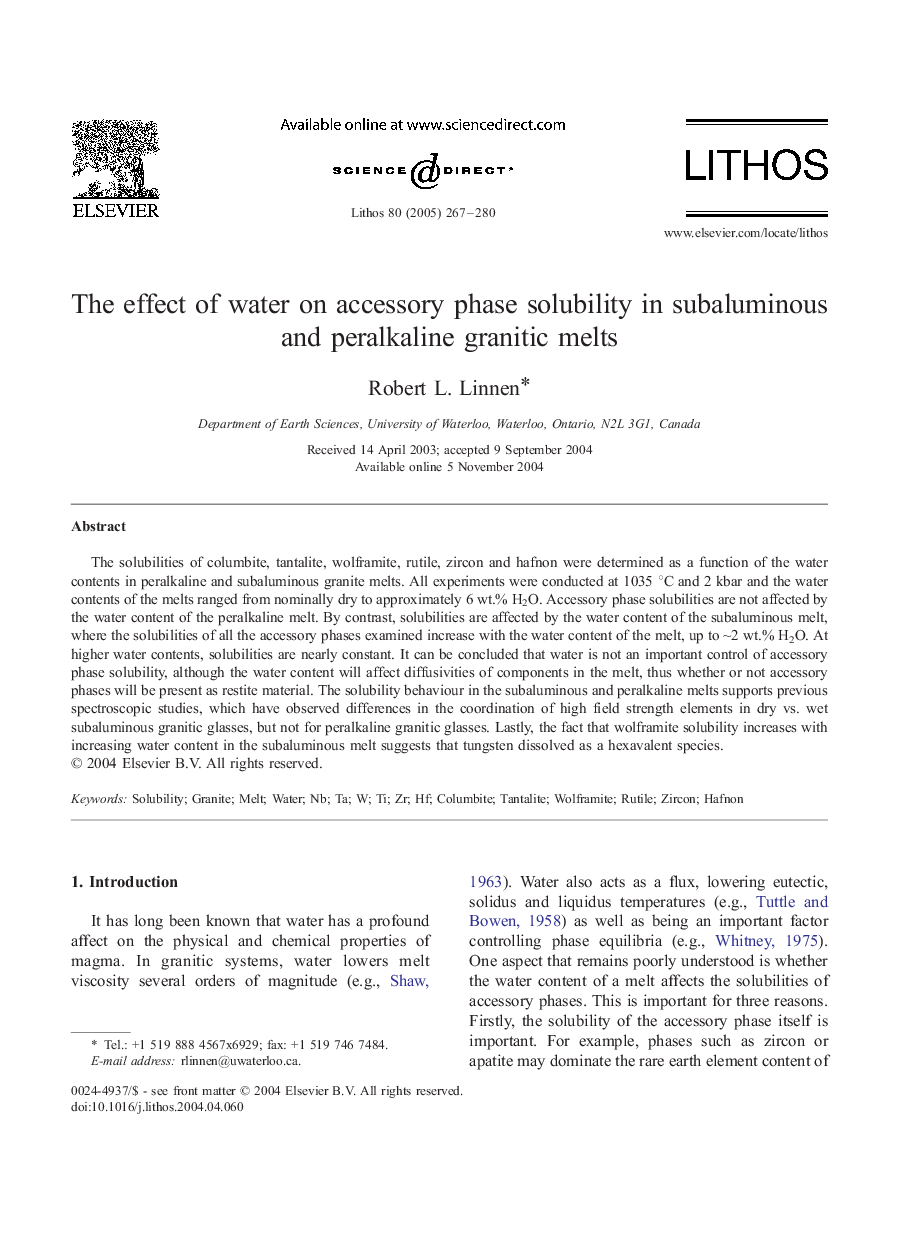| Article ID | Journal | Published Year | Pages | File Type |
|---|---|---|---|---|
| 9532108 | Lithos | 2005 | 14 Pages |
Abstract
The solubilities of columbite, tantalite, wolframite, rutile, zircon and hafnon were determined as a function of the water contents in peralkaline and subaluminous granite melts. All experiments were conducted at 1035 °C and 2 kbar and the water contents of the melts ranged from nominally dry to approximately 6 wt.% H2O. Accessory phase solubilities are not affected by the water content of the peralkaline melt. By contrast, solubilities are affected by the water content of the subaluminous melt, where the solubilities of all the accessory phases examined increase with the water content of the melt, up to â¼2 wt.% H2O. At higher water contents, solubilities are nearly constant. It can be concluded that water is not an important control of accessory phase solubility, although the water content will affect diffusivities of components in the melt, thus whether or not accessory phases will be present as restite material. The solubility behaviour in the subaluminous and peralkaline melts supports previous spectroscopic studies, which have observed differences in the coordination of high field strength elements in dry vs. wet subaluminous granitic glasses, but not for peralkaline granitic glasses. Lastly, the fact that wolframite solubility increases with increasing water content in the subaluminous melt suggests that tungsten dissolved as a hexavalent species.
Related Topics
Physical Sciences and Engineering
Earth and Planetary Sciences
Geochemistry and Petrology
Authors
Robert L. Linnen,
